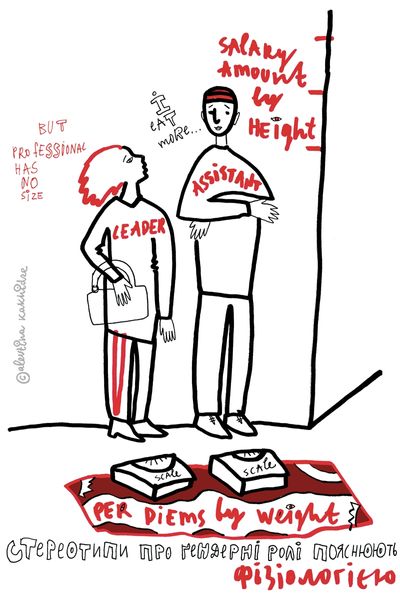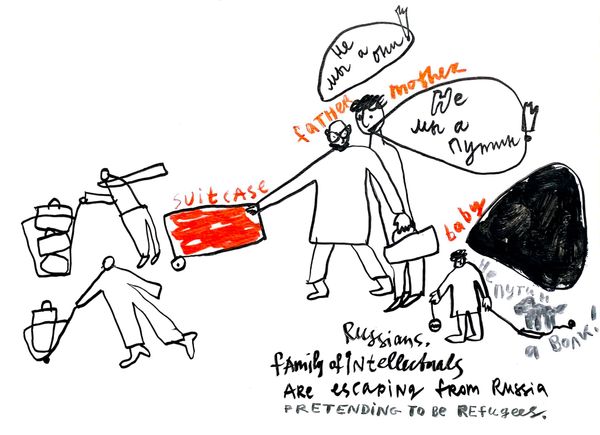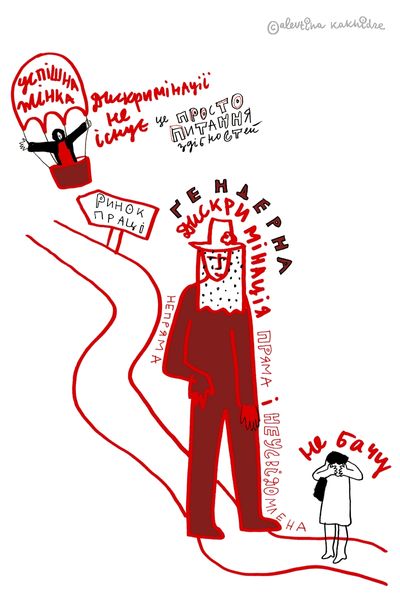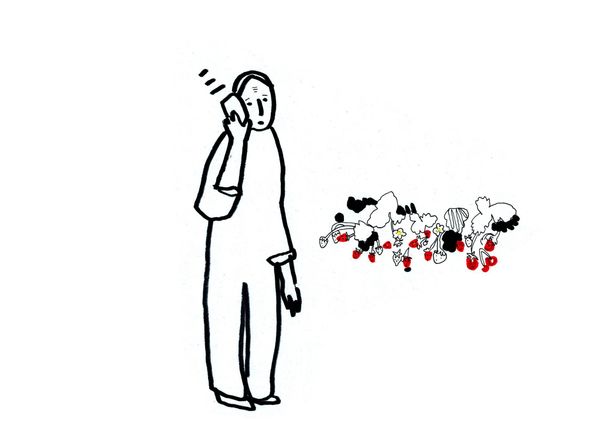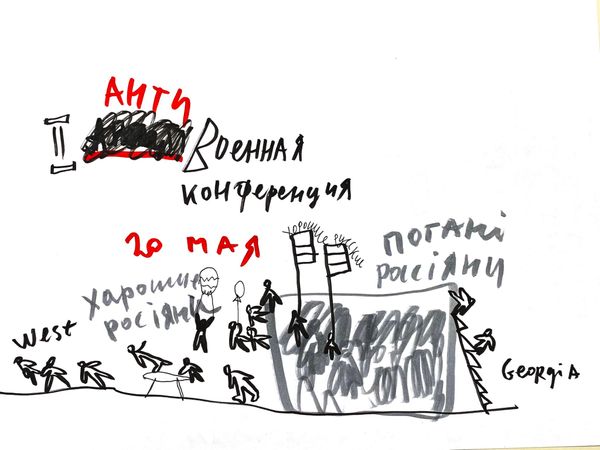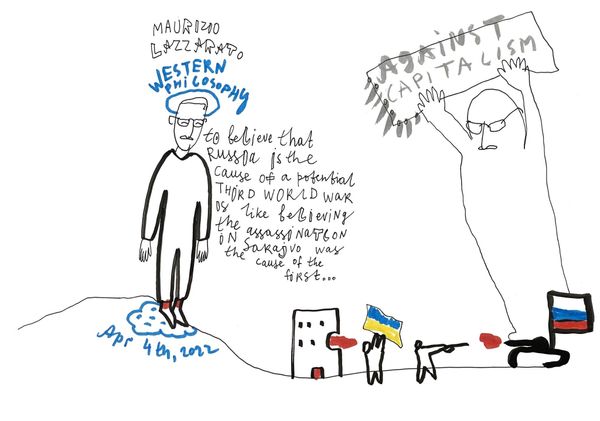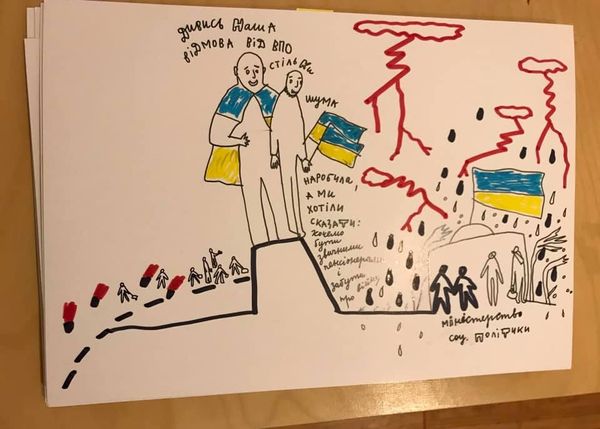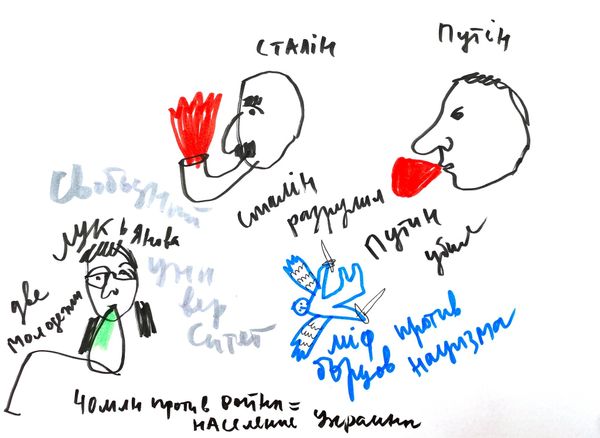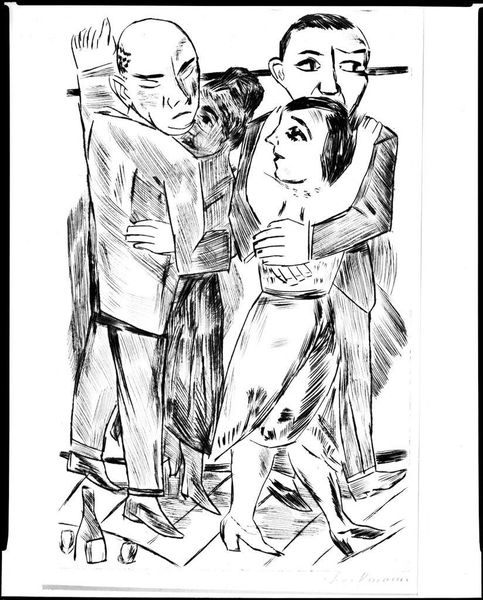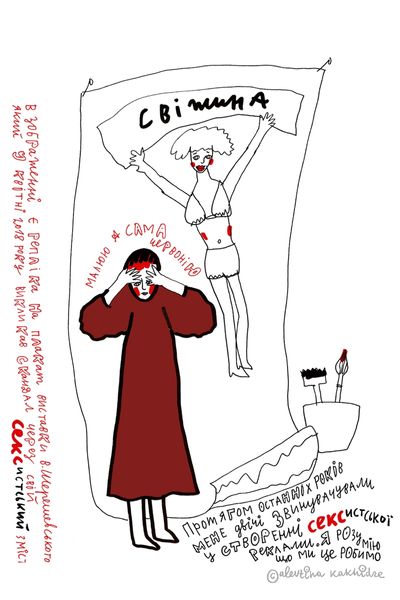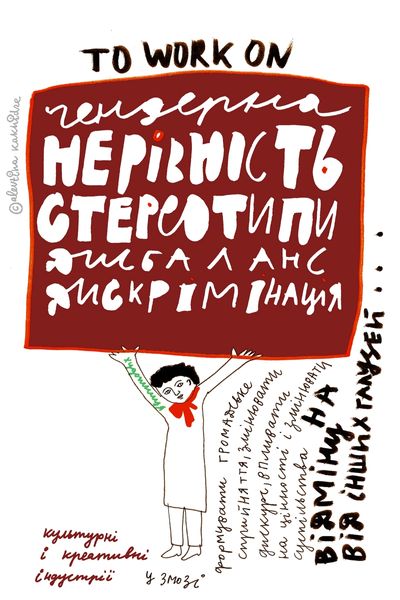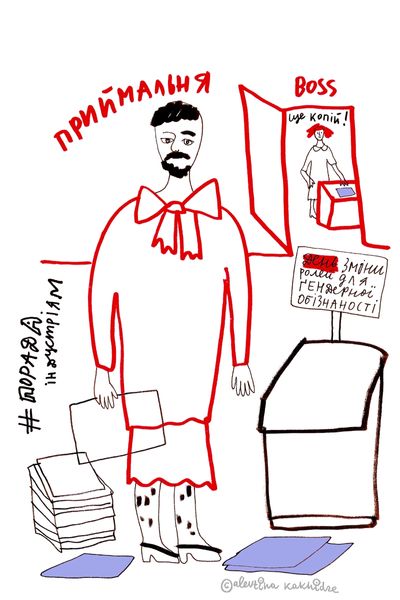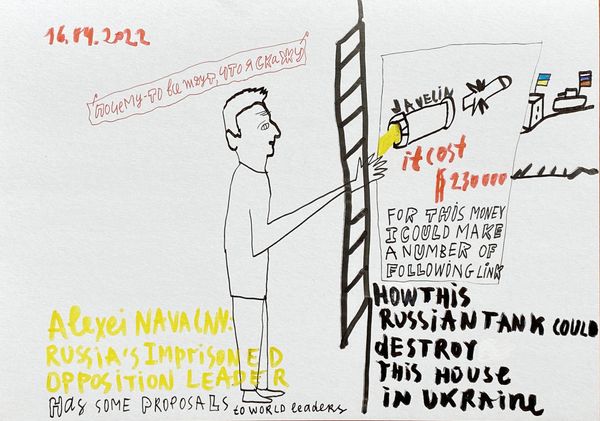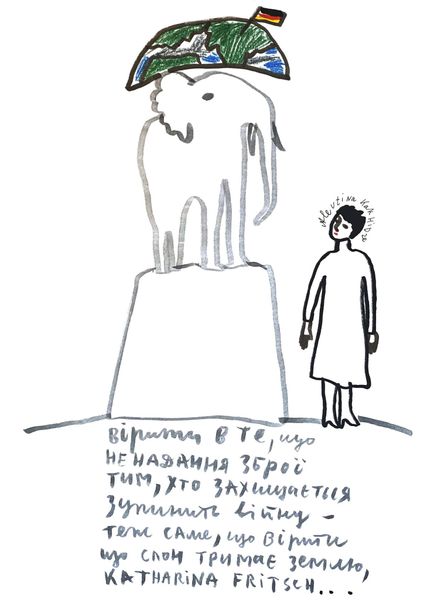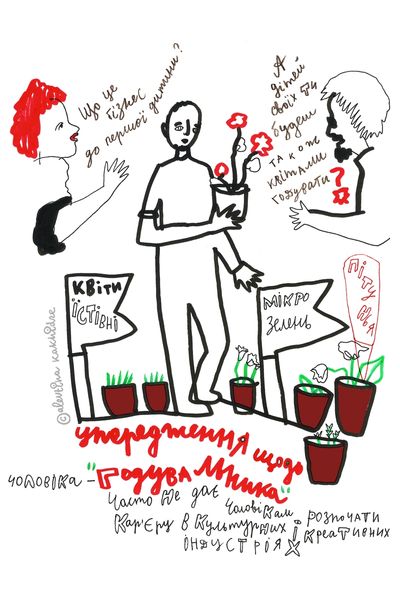
drawing, paper, ink
#
word art style
#
drawing
#
contemporary
#
brush pen line
#
hand-lettering
#
narrative-art
#
cartoon font
#
playful lettering
#
hand drawn type
#
hand lettering
#
figuration
#
paper
#
ink
#
hand-drawn typeface
#
comic
#
playful type
#
small lettering
Copyright: Alevtyna Kakhidze,Fair Use
Curator: This drawing, simply titled "Untitled" by Alevtyna Kakhidze, presents a fascinating interplay of text and figuration executed in ink on paper. It seems deceptively simple at first glance. What are your initial impressions? Editor: My eye is immediately drawn to the family grouping—the stark, almost iconic representation of the parents flanking the child. It's interesting how the artist renders them almost as outlines, yet manages to convey a wealth of unspoken anxieties related to professional life. Curator: The use of ink is quite deliberate. The bold lines contribute to the work's graphic quality, reminding us that this isn't just an image, it’s a statement. It has a visual directness, like signage. And note that while we can’t pinpoint its exact date, the contemporary feel links it to ongoing conversations around labour. What strikes me is how accessible these materials are - the simple choice of ink and paper, a medium available to almost anyone - yet used to create something incredibly poignant. Editor: I agree. And consider the handwritten text. It is striking in that cartoon-like hand. The text is really key: "Will they ask you about your children?" The question carries loaded social implications, especially for women in the workforce. The placement of "CV" emblems by the parent’s hands – really it feels like a marker for their perceived worth versus the "interview room" depicted in bright red to the right, perhaps symbolic of looming judgment. It reminds me how often our social roles define us beyond just professional capabilities. Curator: The repetition of form and text is very interesting from a labor perspective. Note how the composition of CVs and figures, hand drawn lines give it raw emotional texture, while drawing attention to labor - both the invisible labor of childcare, as indicated through text – and visible labor done in interview. How these materials contribute to a bigger narrative? Editor: Precisely. And consider the smallness of lettering: It feels as if we are invited to closely scrutinise the anxiety hidden within those words; how we constantly negotiate our identities when faced by outside social perceptions. It urges reflection beyond that ink line surface… It suggests anxieties prevalent at the intersection of personal lives, workforce contributions: Are we defined simply within these crude visual sketches?! Curator: I think so, that there's definitely power in its deceptively rudimentary construction, it almost asks that of its viewers - the work asks bigger questions on societal roles within what initially appears almost like childish drawing styles, in truth perhaps highlighting deeper layers within those simple techniques through narrative themes! Editor: I wholeheartedly agree. Its simplicity is what grants it the resonance, a quiet mirror reflecting unspoken realities, social commentaries expressed on plain medium with striking significance - almost deceptively blunt…
Comments
No comments
Be the first to comment and join the conversation on the ultimate creative platform.
